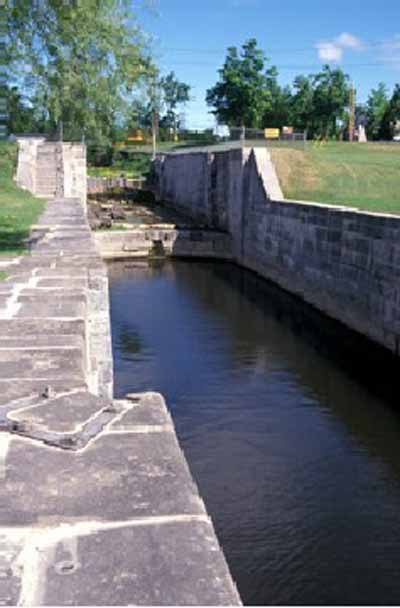Carillon Canal National Historic Site of Canada
Carillon, Quebec

General view
© Parks Canada Agency / Agence Parcs Canada, Bergeron J.F, 1999.
Address :
210 du Barrage Street, Carillon, Quebec
Recognition Statute:
Historic Sites and Monuments Act (R.S.C., 1985, c. H-4)
Designation Date:
1929-05-17
Dates:
-
1826 to 1833
(Construction)
-
1873 to 1882
(Significant)
-
1960 to 1963
(Significant)
Event, Person, Organization:
-
Royal Staff Corps of the British Army
(Architect)
Other Name(s):
-
Carillon Canal
(Designation Name)
Research Report Number:
1987-A03-4
DFRP Number:
56463 00
Plaque(s)
Existing plaque: 210 Barrage Street, Carillon, Quebec
Designed and constructed by the Royal Engineers. Commenced in 1826, completed in 1833, enlarged from 1871 to 1882. One of the canals which, by way of the St. Lawrence and the Ottawa, Rideau, and Catarqui rivers, connect Montreal with Ottawa and Kingston.
Description of Historic Place
Carillon Canal National Historic Site of Canada is a canal now used for recreational purposes, situated on the east side of the Ottawa River, 40 kilometres northwest of Montréal near the village of Carillon. The designation refers to the section of water associated with the first, second and third canals, and the grounds administered by Parks Canada inside the Carillon Canal historic park.
Heritage Value
Carillon Canal was designated a national historic site of Canada in 1929 because it commemorates: the role played by this navigable transportation route during the 19th and 20th centuries, particularly as an interior water route joining Montreal to Kingston on Lake Ontario by the Saint Lawrence River, and the Ottawa, Rideau and Cataraqui Rivers.
The heritage value of the Carillon Canal is reflected in the cultural landscape directly associated with the construction and operation of the canal including the land and water areas, which were modified and used before 1960. The Carillon Canal was built in 1829-1833 by the Royal Staff Corps of the British Army as a defence and immigration route, enlarged in 1873-1882 to improve its facilities for commercial navigation, then severely altered by the construction of a Hydro-Québec dam in 1960-1963. Today it is used for pleasure craft.
Sources: Historic Sites and Monuments Board of Canada, Minutes, 1929, 1987.
Character-Defining Elements
Key elements that contribute to the heritage character of the site include: all structural components of the present canal that witness the materials, forms, technology and operations of its predecessors (pre-1960), particularly: the combined locks forming the lower river entry to the first canal; the canal route leading to the present lock of which part of the form and the south stone wall are associated with the original second canal; the vestiges of the old feeder canal. all components of the cultural landscape of the present canal that provide tangible evidence of the historical use and evolution of the canal site and the requirements of early canal transportation, particularly: the relationship between the superintendent’s residence, the old house of the toll collector, the entry to the first canal and lock number one of the second canal; the access route to the site corresponding to the outline of the old river (portage) road; the spatial and visual interrelationships between different components of the historical landscape; the spatial and visual interrelationships between the lower part of the site and the neighbouring village; viewplanes of community settlement and economic development that occurred along the canal banks spanning the mid 19th to mid 20th century, when it played a major role in defence, settlement and commercial transportation; its association with the Carillon Barracks National Historic Site of Canada.